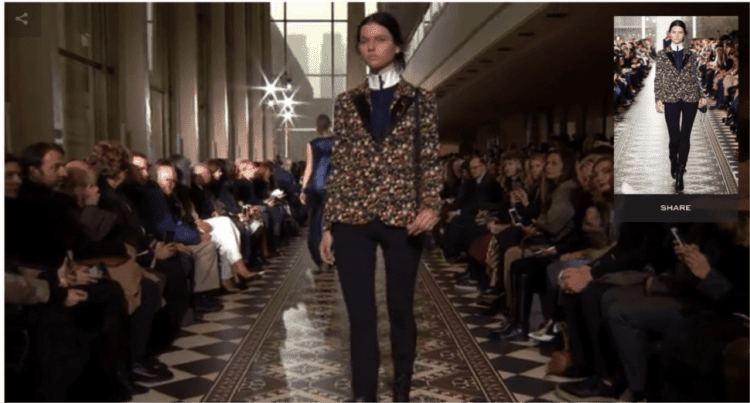Whether you consider yourself a fashionista or fashion-challenged, it is hard to deny that the leading retailers participating in New York’s Fashion Week are at the forefront of eCommerce experimentation. When new clothing collections hit the runways and cutting-edge marketing techniques hit the Internet, merchants of all stripes would do well to review the strategies, especially eCommerce tactics, deployed for the recent New York Fashion Week.
Because leading fashion brands are fashion-forward when it comes to online innovations, there was experimentation aplenty during one of fashion’s biggest weeks. Instagram coverage was heavy, Snapchat accounts lit up with ephemeral views of shows and custom geofilters, and live video feeds were available for those beyond New York.
Focusing on visual content and especially video was a wise move. For start, consuming visual content is a significant activity on mobile devices, where shopping activities are on the upswing: 60% of smartphone users have used their devices as cameras, and half use them to watch video, according to Pew Research.
Additionally, new image-centric social networks such as Instagram and Pinterest cater to mobile users, who make up 57% of the total social media audience, according to Merkle/RKG. New social media formats are almost exclusively mobile-oriented and image-centric, from micro-videos on Vine to live-streaming via Periscope to social messaging on Snapchat.
But it’s not just overall Internet trends that are dictating merchants’ drive for visual content — they also have concrete results proving its value to the bottom line. For example, larger product images have been found to boost conversion by 9%, while the presence of video on a landing page can boost conversion by 80%; and visitors who go on to view those videos are 1.6 times as likely to buy than those who don’t.
Merchants who are upping their investments in visual content and video can reap valuable lessons from last month’s New York Fashion Week experiments. Amidst all the experimentation, there were hits and misses, and lessons broadly applicable in the world beyond high fashion. Among them:
If you’re going live online, understand — and meet — the expectations.
In a world where consumers can download feature films and binge-watch favorite TV shows via the Internet, expectations are high for uninterrupted streaming and high picture quality. Merchants who decide to go live using Periscope or other means should test their technical prowess and their Internet connections extensively to avoid delays, and should devote considerable thought to camera placement to ensure lighting is adequate and background distraction minimized. While murky live streams were plentiful during fashion week, designers such as Tory Burch scored wins with clear high-definition images and embedded sharing tools.
Cross-promote online events relentlessly.
To optimize the ROI for big online events — whether live or not — merchants should deploy a widespread promotional campaign that ties together social media, on-site resources, and in-store opportunities. To make the most of their moments in the spotlight, Fashion Week merchants shared content comprehensively across touchpoints and employed hashtags strategically to generate still more engagement. Kate Spade presented live coverage of its show on no less than five social platforms, as well as on katespade.com.
In person, make the experience immersive.
Designers went all-out in staging their events — from Jay Z’s two-hour extravaganza of fashion and music at Madison Square Garden to Tommy Hilfiger’s recreation of the deck of a luxury steamliner, complete with “deck chairs” for VIP viewers. While most merchants aren’t likely to go so far over the top, the takeaway that in-person experiences have the potential to be more than a shopping trip is an important one. Marrying the best of online content — such as access to customer reviews, expert guides, and even how-to videos — with the unique in-store opportunity to touch and try items can evoke a mood and a lifestyle that resonates with shoppers and compels them to purchase.
Online, make the experience actionable.
However much merchants experiment with new formats, they should always keep the connection to commerce immediate and prominent. Fashion week brands enabled immediate purchasing with embedded links in videos and specialized category pages on their websites that opened up for browsing and buying the items just featured on the catwalk. Designer Rebecca Minkoff featured products in panels overlaid on the live video stream of her presentation, giving remote viewers the opportunity to claim pieces that resonated right as they appeared and boosting in-the-moment spontaneity.
How are you employing cutting-edge visual techniques to drive sales?




